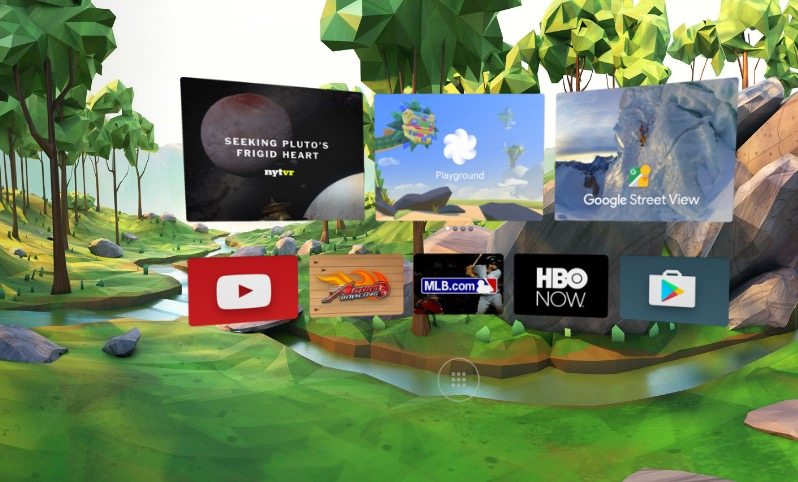There’s been a lot of conversation about what’s to come for virtual reality. Daydream was showcased at the 2016 Google I/O conference just last month, suggesting that VR might become more widely accessible to consumers sooner than many expected. With basic (Google Cardboard), high-end (Oculus Rift, HTC Vive), and soon middle-market (Daydream-enabled devices) options available on the market, virtual reality is something companies need to be seriously considering. While the potential applications of VR are still being negotiated, we predict that – apart from gaming – media and entertainment companies may have the greatest opportunity in the next year or so.
Why Media Companies Are Jumping On Board
Many companies such as Facebook, Samsung, Sony, Microsoft, and Google, have recognized the significance of VR and its immersive ability to bring experiences to life, which is what makes users feel encapsulated with VR content. It goes beyond what we know as reality to a whole new world of exploration, creating memories and experiences for users as if occurring in their real life. It gives people the opportunity for a deeper connection to the content which is why it’s seeing success in gaming, particularly the immersive role-playing games in 3-dimensional worlds.
Non-gaming VR applications, however, are becoming more of a reality with each passing day. The New York Times adopted VR early and partnered with Google Cardboard to create a 360 VR app (NYT VR) that allows users to explore stories in greater detail. Other industries that have adopted VR include sports, education, healthcare, and the military. Immersive entertainment is becoming more in demand, and users want more compelling experiences with movies, TV shows, news, music, and more. For media companies, VR presents an opportunity to give customers entertainment experiences that go beyond the average viewing.
Should Media Companies Jump in Now?
It’s still early to tell how VR will fare. Many have questioned its ability to appeal to the masses and have pointed out that the technology still needs to mature before VR becomes widely adopted. That said, Deloitte predicts that it will be a billion dollar industry in 2016 alone, and with the announcement of Google Daydream last month, accessibility and adoption are likely to be less of a barrier than originally thought.
Daydream is a platform for high-quality mobile VR development which will become available in Fall 2016. As part of Android’s newest operating system (Android N), Google Daydream will make VR more accessible to both users and developers. Google hopes to make its virtual reality platform a mass-market product, expecting millions of Daydream users – as opposed to higher-end, less accessible options like the Oculus Rift or HTC Vive, which require expensive hardware and are more likely to appeal to techies and early adopters.
Furthermore, Google’s hardware partners – Samsung, Huawei, LG, HTC, Xiaomi, and others – will be launching Daydream-enabled smartphones that will be fully equipped with a VR mode. Users will have VR technology right at their fingertips, while developers will have a familiar platform to build VR experiences. Greater accessibility means media companies will have a greater addressable market.
Getting Started With VR: Things to Consider
In Deloitte’s Virtual Reality (VR): a billion dollar niche, it states “we do not expect VR to be used to any great extent in television or movies in 2016.” It points out that there are technological constraints when it comes to VR content made specifically for the medium (a similar issue faced when 3D television and film was still in its infancy). For media companies, challenges include:
- Limited options and price of camera equipment
- As a result, higher difficulty creating VR-specific content
- Standardization has been an issue – devices, operating systems, content guidelines, etc.
Daydream will likely help to address these issues, however, fully immersive VR content isn’t likely to rise quickly this year. When Daydream launches in the Fall, media companies have an opportunity to build specifically for the platform and extend their current properties to a new medium. Furthermore, there is potential to provide a mixture of VR-specific content and more “traditional content”. This hybridized model will help lower costs associated and also allow content providers to learn, iterate, and perfect their VR content as the technology matures. Additionally, there is already precedent that the platform could be promising for the media and entertainment industries, with key players like HBO, NBA, Hulu, and Netflix already entering the space.
On the standardization side, while it won’t completely resolve the issue, Daydream is a platform that will have both standardized software and hardware. Android N is built to accommodate VR, and “Daydream Ready” devices, which are being manufactured by the partners we mentioned above, will have a set of specs that include performance, extra sensors, and specially designed screens.
While still in its early stages, the future of VR looks promising. With a wider range of consumer and developer options slated to hit the market when Daydream is introduced, and projections that VR will be a billion dollar industry in 2016 alone, companies have a big opportunity to make an impact early on. VR adds a lot more value, engaging your entire visual system and providing immersive experiences. It has the potential to evolve now that more content is becoming available, and it’s more affordable and accessible to audiences. Many big players are recognizing the benefits and tapping into the world of VR before they fall behind.








